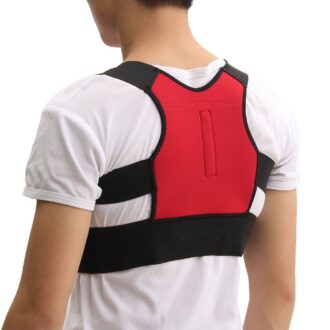Neurogenic Claudication Symptoms, Causes, Test, Treatment
Learn all about neurogenic claudication symptoms, causes, test and treatment.
Neurogenic claudication results from compression of the spinal nerves in the lumbar (lower) spine. Neurogenic claudication is caused by irritation or pinch of the lower spinal cord or cauda equina.
Neurogenic claudication (NC) is a group of symptoms that are commonly associated with spinal stenosis, which is the narrowing of the spinal canal. This condition commonly develops in the lumbar (lower) region of the spine with the following symptoms, pain, numbness and tingling.
Neurogenic claudication (NC) is the clinical syndrome commonly associated with lumbar spinal stenosis (LSS).
Non-surgical management is recommended as initial treatment, but little is known about current practice in relation to the assessment and management of these patients in the non-surgical setting.
What is Neurogenic Claudication?
The term “neurogenic” means problem with nerves and word “claudication” is derived from Latin language, which means a limp. Neurogenic claudication is thus characterized by pain, numbness, weakness, discomfort, urinary incontinence, bladder incontinence and muscle cramping in legs.
Neurogenic Claudication Symptoms
Neurogenic claudication would often have symptoms of feeling tired. Generalized weakness is also one of the non-specific symptoms of neurogenic claudication. Specific Symptoms of Neurogenic Claudication;
- Loss of appetite
- Severe pain is felt in the lower back and legs in patients suffering from neurogenic claudication. Symptoms of pain associated with neurogenic claudication are spread along the dermatome of the spinal nerve depending on pinch or irritation of the spinal nerve.
- Burning and sharp pain associated with neurogenic claudication is triggered by flexion of the lower back. Pain is aggravated while walking up the hill with back in flex position.
- Pain in patients suffering from neurogenic claudication can start upon walking and bending backwards and gets relieved upon sitting or stooping.
- Irritation or pinch of the motor nerve causes muscle contractions resulting in muscles spasm and cramping in patients suffering from neurogenic claudication.
- The level of muscle cramp depends on the irritation or pinch of the segmental spinal nerve.
- In few cases patient suffering from neurogenic claudication feels continuous leg discomfort, which may or may not respond to pain medications.
- Leg discomfort may be less severe during extension of spinal cord.
- Pressure or pinch of lower spinal cord or cauda equina causes initial sensory symptoms like tingling in patients suffering from neurogenic claudication, which spreads along the dermatome supplied by the nerve.
- Tingling is felt as pins and needles along the dermatome of the nerve in one or both leg.
Persistent pressure or irritation of spinal sensory nerve results in numbness. - Cauda equina syndrome is a group of symptoms caused by pinch or pressure over cauda equina below second lumbar spinal segment.
- Symptoms are sensory (tingling, numbness), motor (muscle weakness) and autonomic (bladder and bowel incontinence).
Sensory symptoms like tingling and numbness is caused by pinch or pressure over sensory nerve. Motor symptoms like muscle weakness is caused by motor nerve lesion and autonomic symptoms like bladder and bowel incontinence is caused by pressure or pinch of autonomic nerve.
Neurogenic Claudication Causes
Neurogenic claudication causes are;
- Spinal Stenosis-
- Osteophytes within Spinal Canal-
- Spondylolisthesis 4
- Facet Joint Hypertrophy
- Ossification of Posterior Spinal Ligament-
- Vertebral Column Bone Tumor-
- Degenerative Disc Disease (DDD)
- Midline Synovial Ganglion Cyst
Neurogenic Claudication Test
Neurogenic claudication can be diagnosed by following tests;
- X-rays
- Magnetic resonance imaging
- CT scan
- Electromyogram
Neurogenic Claudication Treatment
Neurogenic claudication treatment can be done surgically or by medications. The goal of surgical treatment is to decompress (remove the pressure from) the nerve roots in the lumbar spine. If the compression results from a herniated disc, a micro discectomy (procedure that uses small incisions with a tiny video camera for viewing) may provide relief. In other cases, a laminectomy (removal of part of a bone) may be necessary. Surgery is often superior choice of treatment for Neurogenic Claudication.
- Partial Fascectomy
- Lumbar Decompression Surgery
Medical treatments include;
- Pain relievers. Pain medications such as ibuprofen (Advil, Motrin IB, others), naproxen (Aleve, others) and acetaminophen (Tylenol, others) may be used temporarily to ease the discomfort of spinal stenosis. They are typically recommended for a short time only, as there’s little evidence of benefit from long-term use.
- Antidepressants. Nightly doses of tricyclic antidepressants, such as amitriptyline, can help ease chronic pain.
- Anti-seizure drugs. Some anti-seizure drugs, such as gabapentin (Neurontin) and pregabalin (Lyrica), are used to reduce pain caused by damaged nerves.
- Opioids. Drugs that contain codeine-related drugs such as oxycodone (Oxycontin, Roxicodone) and hydrocodone (Norco, Vicodin) may be useful for short-term pain relief. Opioids may also be considered cautiously for long-term treatment. But they carry the risk of serious side effects, including becoming habit forming.
 Health & Care Information
Health & Care Information 


